Garden Pests
Identifying garden pests is sometimes difficult, as there are many, but important when it comes to pest control in your garden. However, with the right tips and facts about garden pests at your disposal, you can arm yourself with the tools you need for controlling pests before they take control of your plants. Common pests in the garden don’t need to be a cause for alarm. Simply use the following information for identifying garden pests and learn how to employ the best methods for pest control in your garden.
Explore Garden Pests
Garden Pests
-

Kangaroo Deterrents: How To Control Kangaroos In The Garden
Kangaroos in the garden can be more of a nuisance than a delight due to their grazing habits. They will eat almost anything from prized roses to carefully tended vegetables. Click this article for some tips on how to control kangaroos in your garden.
By Bonnie L. Grant
-

Twig Girdler Control: Learn How To Manage Twig Girdler Damage
The common names of bugs can give useful information about the type of damage they might do to your plants. Twig girdler beetles are a great example. As the names suggests, these insect pests chew the bark around small branches. Learn how to control them here.
By Teo Spengler
-
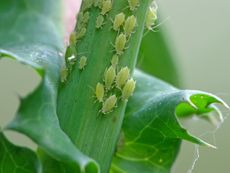
Greenfly Information: Greenfly Aphid Control In The Garden
Greenflies are simply another name for aphids - tiny pests that wreak havoc in gardens and farms around the world. This article contains information on their damage and what you can do to rid them of your garden. Click here to learn more.
By Mary H. Dyer
-

What Are Scout Beetles: Japanese Beetle Facts And Information
The first Japanese beetles to appear become scouts for others, notifying the rest of the adults by marking territory for them to follow. These advance scout beetles basically run reconnaissance on your garden. Find out how to control them here.
By Amy Grant
-

Controlling Tortrix Moths – Learn About Tortrix Moth Damage In Gardens
Tortrix moth caterpillars are small, green caterpillars that roll themselves snugly in plant leaves and feed inside the rolled leaves. The pests affect a variety of ornamental and edible plants, both outdoors and indoors. Click here for more information.
By Mary H. Dyer
-

Capsid Bug Treatment – Managing Capsid Bugs In Gardens
Capsid insects feed on plant sap and damage is most common on plant tips in woody or herbaceous plants. Early capsid control is essential to preserving the foliage and fruit of your trees and shrubs. This article will help with that.
By Bonnie L. Grant
-
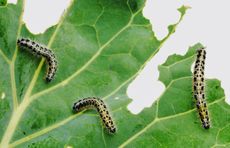
How To Prevent Caterpillars: Controlling Caterpillars In The Garden
Caterpillars show up in gardens in late summer and early fall. Only take extreme measures if you feel they’re being too destructive. Learn more here.
By Gardening Know How
-

Garden Grade Vs. Food Grade Diatomaceous Earth: What Is Garden Safe Diatomaceous Earth
One type of diatomaceous earth is toxic and another is relatively safe to use. The type you should purchase depends on the intended use. Find out about the advantages and disadvantages of garden grade vs. food grade diatomaceous earth in this article.
By Jackie Carroll
-
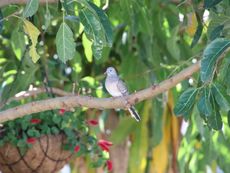
Hanging Plant With Birds: What To Do For Birds In Hanging Baskets
Hanging planters often provide attractive nesting sites for birds. Bird-proofing hanging baskets will prevent unwanted attacks and ease concerns about watering or maintaining your containers. Try a few of the suggestions in this article.
By Bonnie L. Grant
-

What Are Leafrollers: Leafroller Damage And Control
Leafroller insects can cause significant damage to garden plants. The following article will help with controlling these pests and minimize further problems. Read here to get additional information.
By Kristi Waterworth
-

Tree Protection Against Deer: Protecting Newly Planted Trees From Deer
There is nothing more frustrating than noticing the bark is peeled away from brand new trees. Deer are graceful but their feeding and rubbing hurt your plants. So how can you protect baby trees from deer? The answers are found in this article.
By Bonnie L. Grant
-

Fox Pest Control: Tips On Getting Rid Of Foxes In The Garden
In some areas of the country, the fox can be a menace. Learn more about how to prevent foxes in the garden by reading the article that follows. Don't let these sly animal pests wreak havoc on your turf. Click here.
By Amy Grant
-

What Are Crane Flies: Information On Crane Flies And Lawn Damage
If you spy what looks like a giant mosquito, don't panic - it's only a crane fly. Though beneficial decomposers, crane flies and lawn damage also go hand in hand. Learn how to control them in this article.
By Kristi Waterworth
-

What Are Psyllids: Tips On Getting Rid Of Psyllids
Before you spray for psyllids, read this article so you better understand the difference between harmless psyllids and the psyllid pests that pose a real threat to your plants. Click here to learn more.
By Kristi Waterworth
-
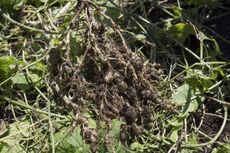
Nematicide Information: Using Nematicides In Gardens
What are nematicides, and what do you need to know about using nematicides in gardens? In simple terms, nematicides are chemicals used to kill nematodes - tiny, parasitic worms that live in water or soil. Looking for more nematicide information? Click here.
By Mary H. Dyer
-

Steps To Eliminate Spittlebugs - How To Control Spittlebug
Never heard of spittlebugs? You are not alone. Most probably have seen the nest they make and wondered if someone spit on their plant. Find out more about these pests in the article that follows.
By Stan V. Griep
-
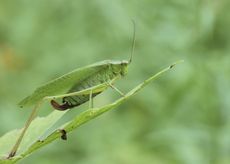
Katydid Facts: Managing Katydids In The Garden
Generally, katydids in the garden nibble leaves but do not do serious garden damage. You'll need to get a few more katydid facts to determine whether to try to get rid of them. This article provides more information about katydids.
By Teo Spengler

